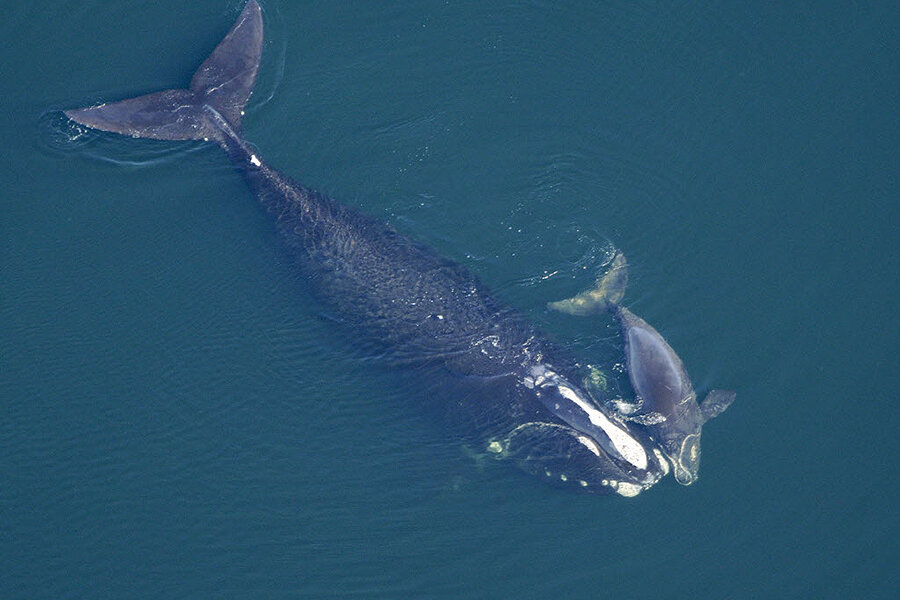New whale call, dubbed 'Western Pacific Biotwang,' discovered in Mariana Trench
Loading...
Below the surface of the world's deepest waters, above the Mariana Trench, researchers have discovered a strange sound they say could be a new baleen whale call.
Baleen whales are known for their distinctive songs. This particular sound, which researchers nicknamed the Western Pacific Biotwang, lasts between 2.5 and 3.5 seconds and includes five separate parts with a dramatic range of frequencies, from a low 38 hertz to a "metallic finale" of 8,000 hertz. The findings were published in the The Journal of the Acoustical Society of America by researchers from the Cooperative Institute for Marine Resource Studies, a partnership between Oregon State University and the National Oceanic and Atmospheric Administration.
“It’s very distinct, with all these crazy parts,” Sharon Nieukirk, a senior faculty research assistant in marine bioacoustics at Oregon State University and the lead author of the study, said in a university press release. “The low-frequency moaning part is typical of baleen whales, and it’s that kind of twangy sound that makes it really unique. We don’t find many new baleen whale calls.”
The Mariana Trench, which runs between Japan and Australia, plunges to depths of about 36,000 feet and is the deepest known part of any ocean on Earth. Until recently, scientists assumed that these murky depths were quiet, but in a separate study this spring, a research team discovered that it was actually abuzz with sound.
“You would think that the deepest part of the ocean would be one of the quietest places on Earth,” Robert Dziak, a NOAA research oceanographer and chief scientist on the project, said in a March statement. “Yet there really is almost constant noise from both natural and man-made sources.”
The hydrophone they lowered seven miles underwater picked up everything from whale calls and ships passing overhead to earthquakes and typhoons.
In the newest study, the sound was recorded by a passive acoustic ocean glider, an instrument designed to travel on its own for months at a time. When Dr. Nieukirk’s research team analyzed the sound, the found that it was similar to what they call the “Star Wars” sound – a call produced by the dwarf minke whale, a type of baleen whale that lives off the northeast coast of Australia, near the Great Barrier Reef.
Considering the sound’s resemblance to the minke whale call, the researchers have tentatively concluded that this sound too, comes from a minke whale, which live in most oceans around the globe, and which use a variety of distinct calls. In the Atlantic, they emit low-frequency "pulse trains," while minkes in the North Pacific make what scientists call "boing" noises.
“We don’t really know that much about minke whale distribution at low latitudes,” Nieukirk said in a release. “The species is the smallest of the baleen whales, doesn’t spend much time at the surface, has an inconspicuous blow, and often lives in areas where high seas make sighting difficult. But they call frequently, making them good candidates for acoustic studies.”
Still, there are some complications with this theory. Baleen whale calls are typically heard in conjunction with their winter mating season, but the Western Pacific Biotwang has been recorded throughout the year.
“We need to determine how often the call occurs in summer versus winter, and how widely this call is really distributed,” Nieukirk added.
But she believes that more data will help all answer the remaining questions, and hopes that her team will be the ones to continue the research.
“Our hope is to mount an expedition to go out and do acoustic localization, find the animals, get biopsy samples and find out exactly what’s making the sound,” she said. “It really is an amazing, weird sound, and good science will explain it.”








